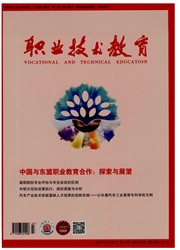

 中文摘要:
中文摘要:
1998-2012年,我国中等职业教育经历了低谷期、大发展时期、转型期等不同的阶段,借助Malquist指数方法分析我国中等职业教育的全要素生产率指数(TFP)变化,可以发现,我国中等职业教育全要素生产率的增长主要由技术进步效率推动,资源配置效率对全要素生产率的作用有限。同时,规模效率和纯技术效率对资源配置效率作用并不明显。不断提高中等职业教育的技术进步水平和技术管理水平是其可持续发展的保证。
 英文摘要:
英文摘要:
Chinese secondary vocational education has gone through different stages of the trough, rapid development and transition from 1998 to 2012. The changes of TFP of Chinese secondary vocational education can be analyzed base on the Malmquist Index Method. The result shows that the growth of TFP of Chinese secondary vocational education is mainly driven by technological advances efficiency, while the effect of resource allocation efficiency is limited. Meantime, scale efficiency and pure technology efficiency also have little effect on the growth of resource allocation eflqciency. The future strategy of Chinese secondary vocational education should focus on the continuous improvement of its technology progress and management capability.
 同期刊论文项目
同期刊论文项目
 同项目期刊论文
同项目期刊论文
 期刊信息
期刊信息
